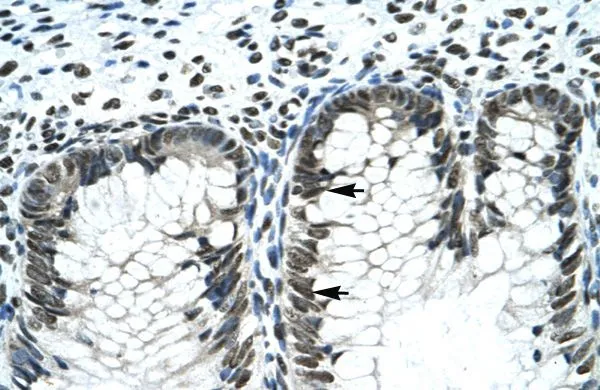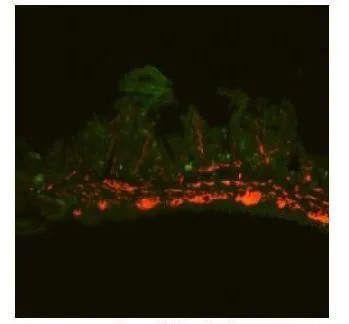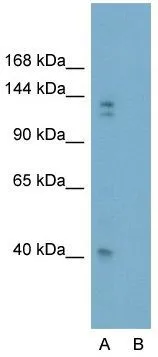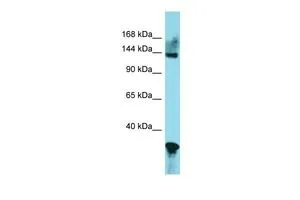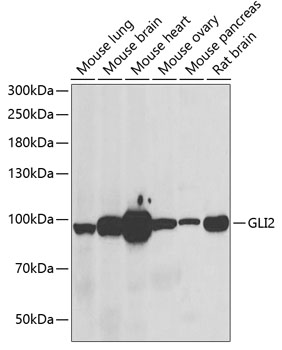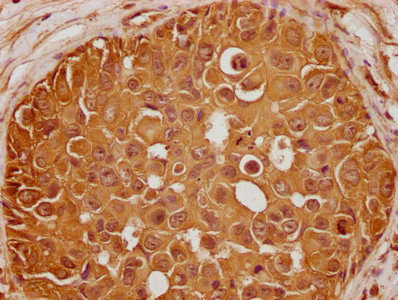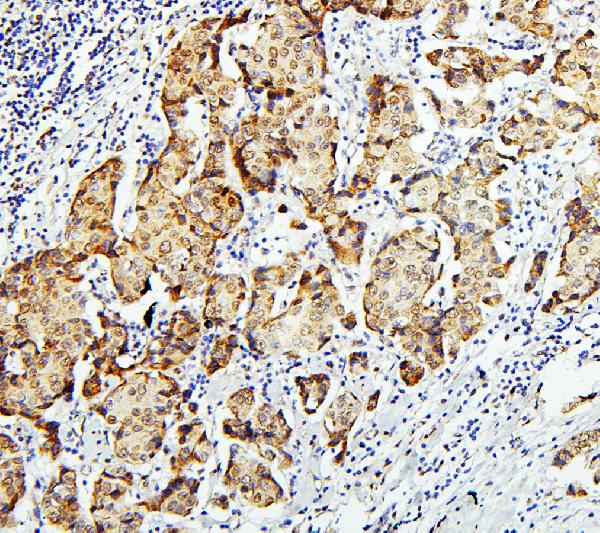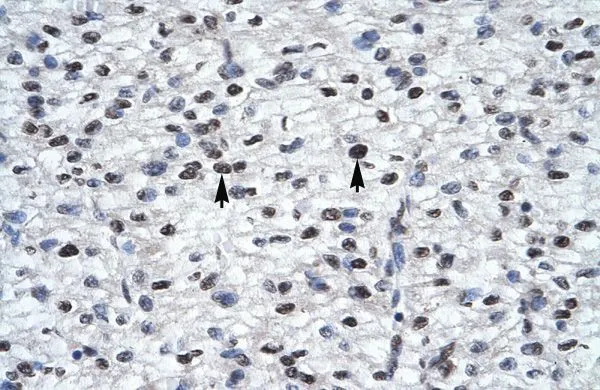
IHC-P analysis of human heart tissue using GTX46056 Gli2 antibody at 4.0-8.0microg/ml.
Gli2 antibody, Internal
GTX46056
ApplicationsImmunoFluorescence, Western Blot, ImmunoCytoChemistry, ImmunoHistoChemistry, ImmunoHistoChemistry Frozen, ImmunoHistoChemistry Paraffin
Product group Antibodies
TargetGLI2
Overview
- SupplierGeneTex
- Product NameGli2 antibody, Internal
- Delivery Days Customer9
- Application Supplier NoteWB: 0.2-2.5 ug/ml. IHC-P: 2-10 ug/ml. *Optimal dilutions/concentrations should be determined by the researcher.Not tested in other applications.
- ApplicationsImmunoFluorescence, Western Blot, ImmunoCytoChemistry, ImmunoHistoChemistry, ImmunoHistoChemistry Frozen, ImmunoHistoChemistry Paraffin
- CertificationResearch Use Only
- ClonalityPolyclonal
- Concentration0.5-1 mg/ml
- ConjugateUnconjugated
- Gene ID2736
- Target nameGLI2
- Target descriptionGLI family zinc finger 2
- Target synonymsCJS, HPE9, PHS2, THP1, THP2, zinc finger protein GLI2, GLI family zinc finger protein 2, GLI-Kruppel family member GLI2, glioma-associated oncogene family zinc finger 2, oncogene GLI2, tax helper protein 1, tax helper protein 2, tax-responsive element-2 holding protein, tax-responsive element-25-bp sequence binding protein
- HostRabbit
- IsotypeIgG
- Protein IDP10070
- Protein NameZinc finger protein GLI2
- Scientific DescriptionThis gene encodes a protein which belongs to the C2H2-type zinc finger protein subclass of the Gli family. Members of this subclass are characterized as transcription factors which bind DNA through zinc finger motifs. These motifs contain conserved H-C links. Gli family zinc finger proteins are mediators of Sonic hedgehog (Shh) signaling and they are implicated as potent oncogenes in the embryonal carcinoma cell. The protein encoded by this gene localizes to the cytoplasm and activates patched Drosophila homolog (PTCH) gene expression. It is also thought to play a role during embryogenesis. The encoded protein is associated with several phenotypes- Greig cephalopolysyndactyly syndrome, Pallister-Hall syndrome, preaxial polydactyly type IV, postaxial polydactyly types A1 and B. [provided by RefSeq, Jul 2008]
- Storage Instruction-20°C or -80°C,2°C to 8°C
- UNSPSC12352203
References
- Horák P, Kreisingerová K, Réda J, et al. The Hedgehog/GLI signaling pathway activates transcription of Slug (Snail2) in melanoma cells. Oncol Rep. 2023,49(4):pii: 75. doi: 10.3892/or.2023.8512.Read this paper
- Gailey CD, Wang EJ, Jin L, et al. Phosphosite T674A mutation in kinesin family member 3A fails to reproduce tissue and ciliary defects characteristic of CILK1 loss of function. Dev Dyn. 2021,250(2):263-273. doi: 10.1002/dvdy.252Read this paper

